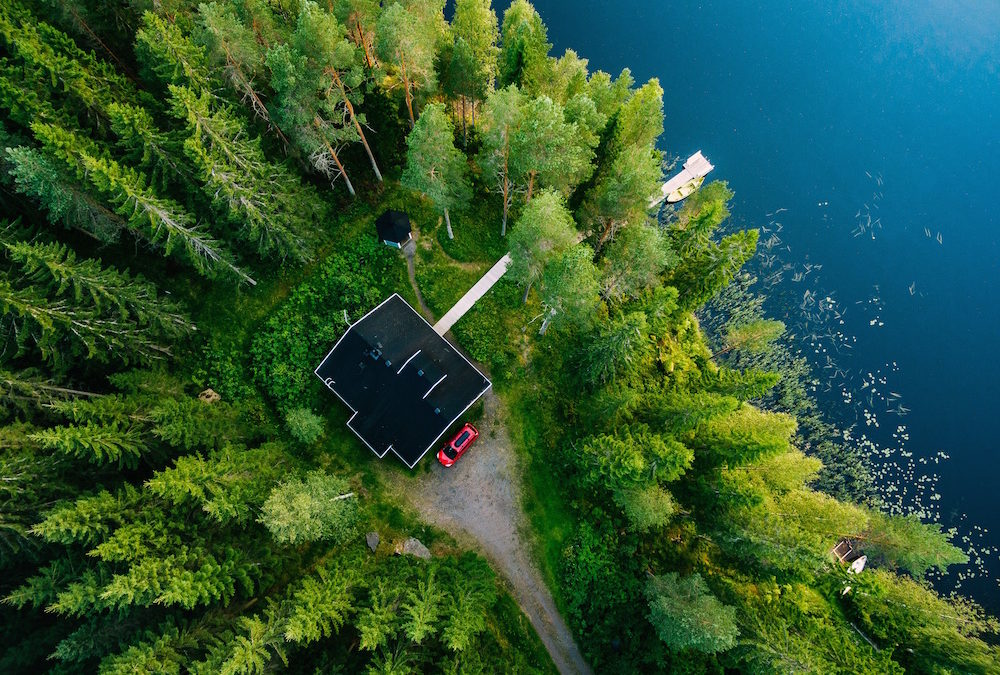Is it time to buy a cottage?
One of the benefits of living in Barrie is cottage country! After buying a primary residence, many families and individuals set their sights on purchasing a property for weekend getaways. There are a few financial options available to those looking to buy a cottage. The following post will outline the mortgage process for buying a second property and the financing structures available to borrowers. The goal of this post is to make sure you understand what the cottage buying process entails before you start scrolling MLS listings and fall in love with your dream lakefront property.
Property classification
One of the most important factors to keep in mind when viewing potential properties is the distinction between type A and type B cottages.
Type A properties: These are essentially second homes. They offer year-round access and are winterized with a permanent heat source. Type A properties also have running water and a permanent foundation below the frost line.
Type B properties: It’s more accurate to describe these as vacation homes. These properties offer only seasonal access, which means there is no permanent heating source, even though they still need to have indoor plumbing. Type B properties are sometimes built on a ‘floating foundation,’ meaning it rests on concrete bricks or pilings.
Type A properties
Mortgage lenders have different financing requirements depending on the property classification. Lenders treat type A properties as second homes, and therefore the mortgage is more or less the same as a primary residence. This means lenders require a minimum five per cent down payment with either a fixed or variable term mortgage. In addition, lenders need a 20 per cent down payment to avoid CMHC insurance on your loan. Type A properties additionally offer the option to refinance your mortgage once you build equity. Interest rates for type A cottages may be .10 per cent – .20 per cent higher than a traditional mortgage, since the property is not owner-occupied year-round.
If an owner is unable to meet their required monthly mortgage payments, they must prioritize their primary residence over their cottage. This exposes lenders to a higher risk of default on cottages. Lenders hedge this risk by capping the maximum mortgage amounts at lower levels. However, for type A properties, because they can be marketed as either a primary or secondary residence, they are considered ‘prime.’ This means that borrowers can mortgage up to 95 per cent of the property’s value and may refinance up to 90 per cent. The maximum amortization period for type A properties may be as high as 25 years.
Type B properties
Unlike type A, type B properties require a minimum of a 10 per cent down payment, and the total value of the property may not exceed $350,000. The interest rate for type B properties is also typically .10 per cent – .20 per cent higher, but may only be a fixed-rate mortgage. Lenders consider type B cottages less desirable, riskier investments. This results in stricter lending policies, such as only 90 per cent of the total property value being available for financing.
How to finance your second home
When deciding how to pay for your cottage, there are three main options you have to choose from:
- Refinance your principal residence and purchase your cottage outright.
- Take on a second mortgage on the cottage itself.
- A mix of options 1 and 2.
You can refinance up to 80 per cent of your home’s value. If you have a strong credit score, this is likely the easiest solution. You may use the equity that you have built up in your house to finance the total value of your cottage. If you do not have much equity built up in your home and can afford to pay two mortgage payments, option 2 may be the right choice for you. Lastly, option three entails a mix of the first two options by allowing borrowers to take out equity in their home to pay for the down payment on the cottage. However, this still requires a mortgage to finance the remainder of the purchase price.
Are you thinking it’s time to buy a cottage and don’t know where to start? Give me a call at (705) 333-4338 or get in touch with me here!
